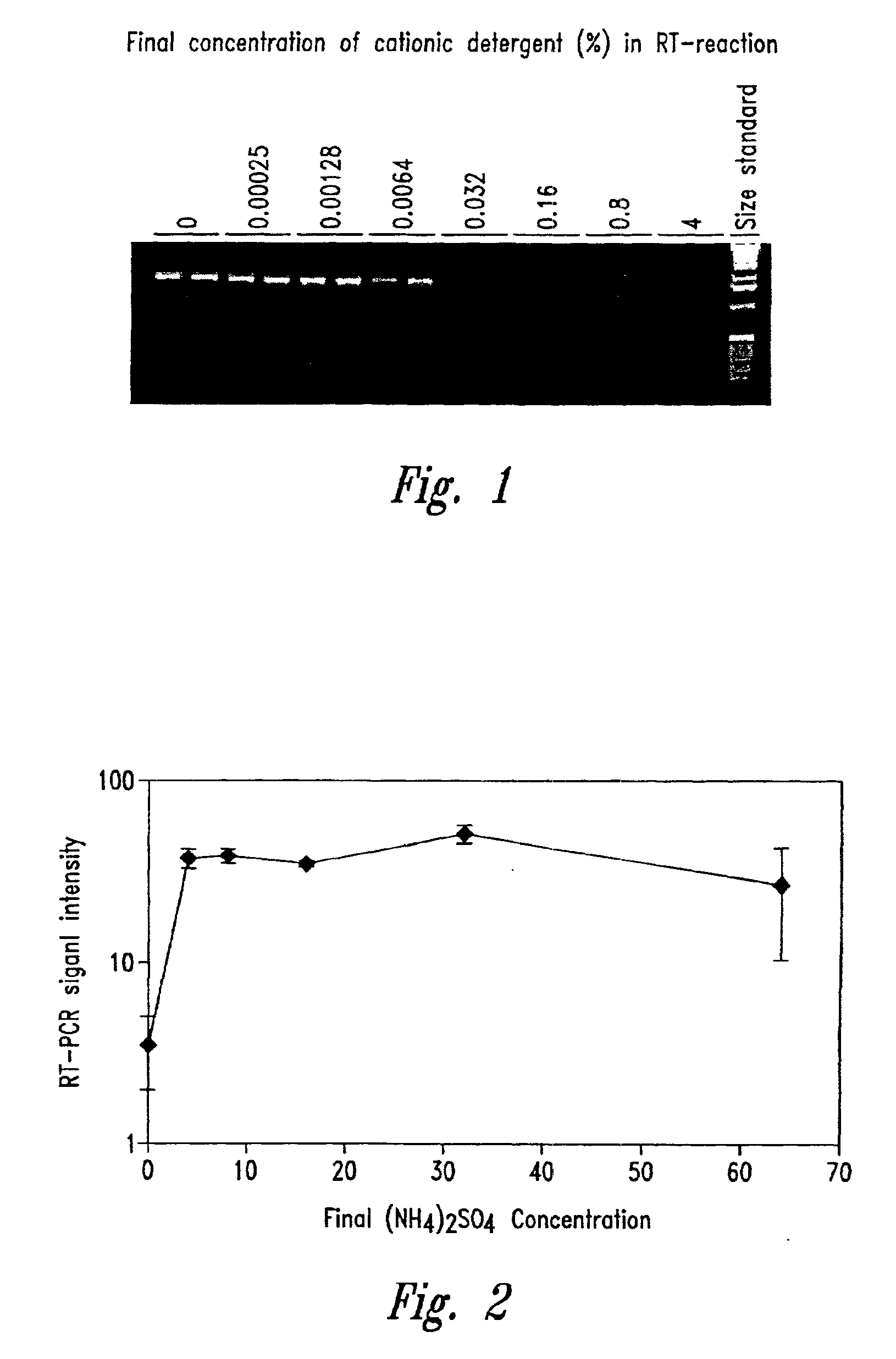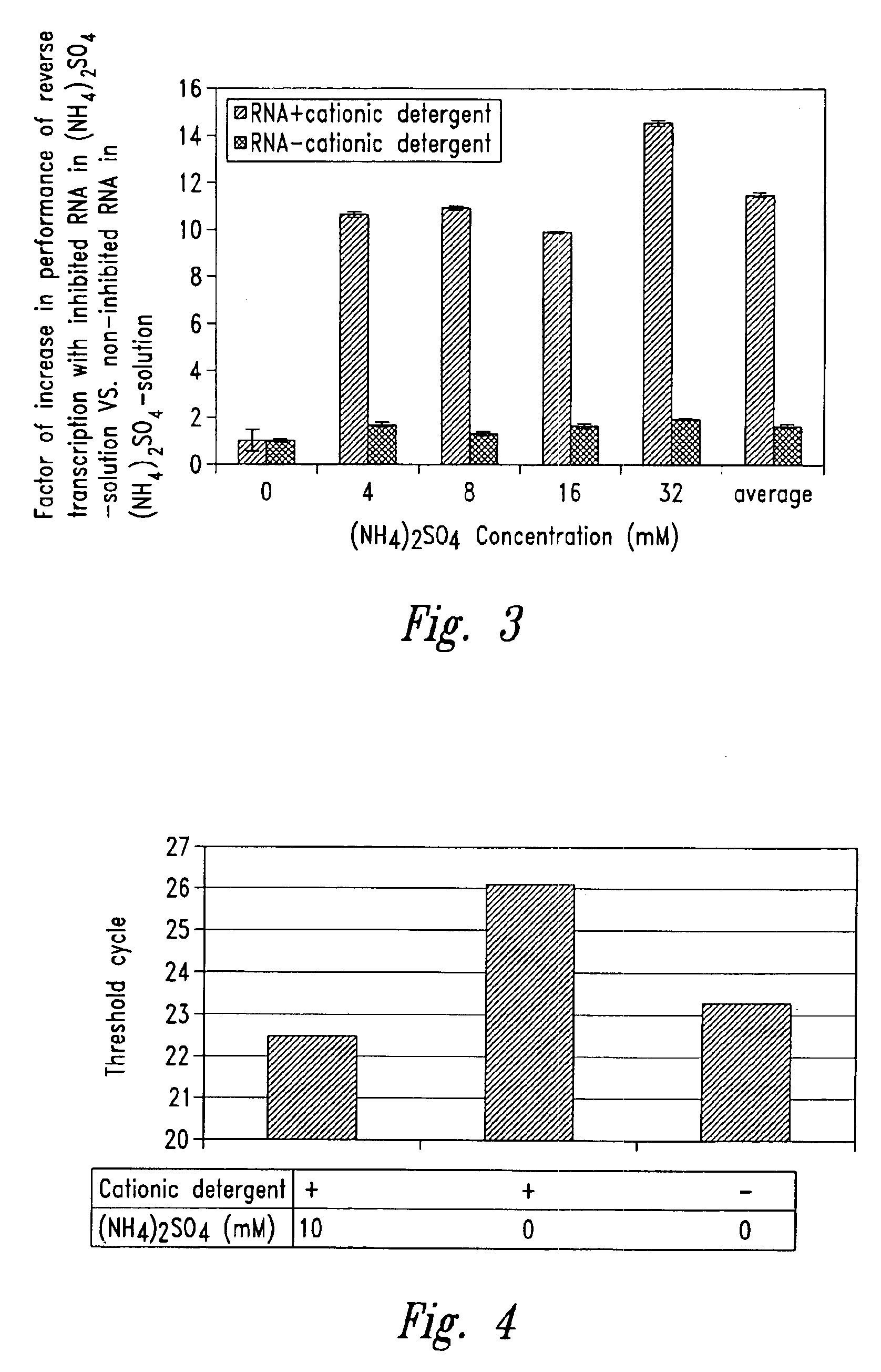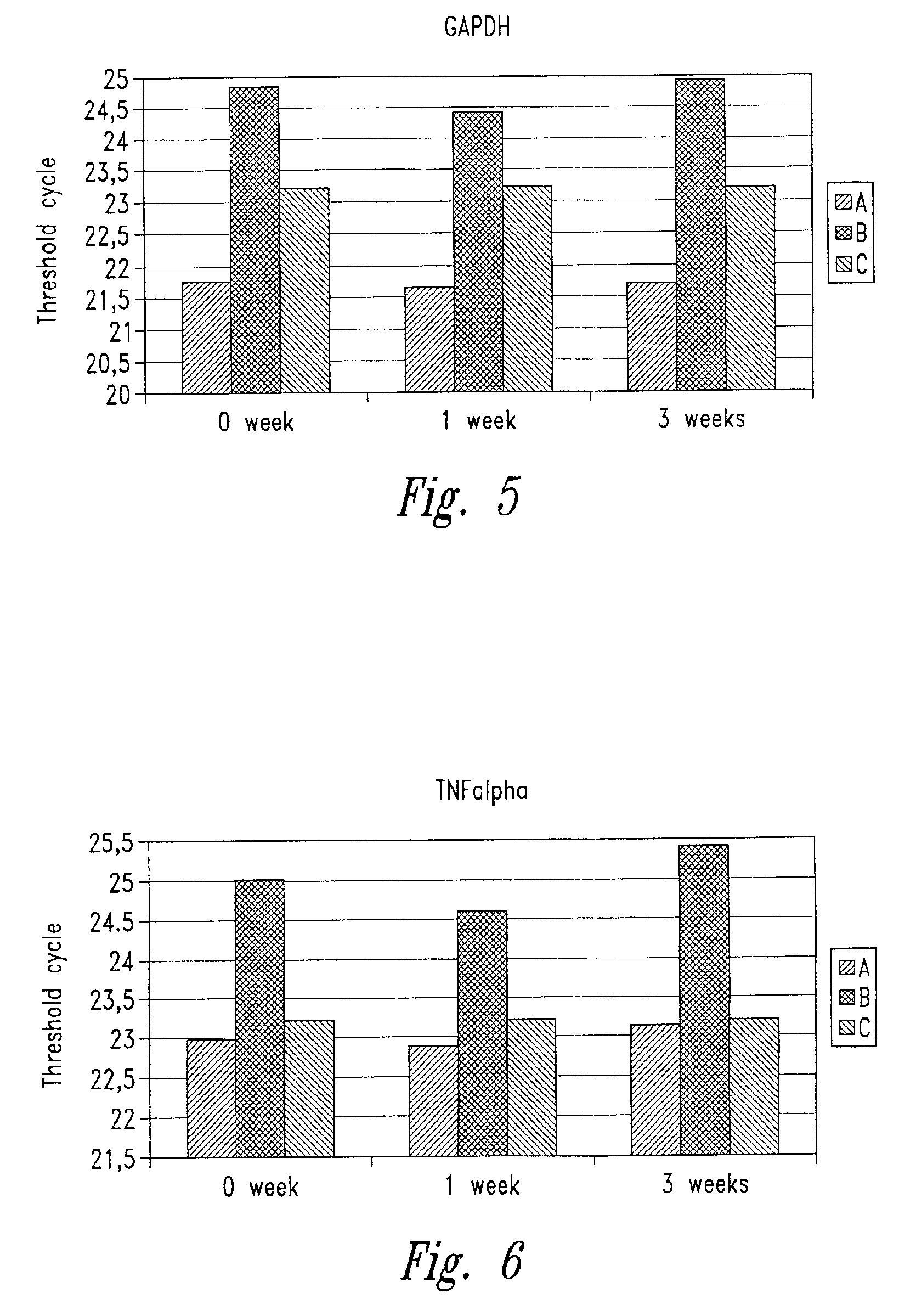Ammonium sulfate for neutralization of inhibitory effects
a technology of inhibitory effects and ammonium sulfate, which is applied in the field of biochemistry, can solve the problems of affecting the function and analysis of rna, cleavage of rna interferes with the downstream application of rna, and cannot stop the interaction, so as to enhance the signal, enhance the signal, and increase the reverse transcription performance
- Summary
- Abstract
- Description
- Claims
- Application Information
AI Technical Summary
Benefits of technology
Problems solved by technology
Method used
Image
Examples
example 1
Inhibitory Effects of Cationic Detergents on Reverse Transcription
This example shows that cationic detergents can inhibit reactions with RNA samples.
As shown in FIG. 1, a cationic detergent at a final concentration of 0.0064% or greater was inhibitory during reverse transcription of RNA.
example 2
Addition of (NH4)2SO4 to RNA that Contains Inhibitory Molecules Increases the Reverse Transcription Performance
Enzymatic reactions with RNA as a template (such as reverse transcription) are crucial for cloning and expression analysis. However, many contaminants present in reaction mixtures inhibit the activities of reverse transcriptases, thus prevent RNA from being quantitatively analyzed. As shown in FIG. 2, in the presence of cationic detergents, signals with very low intensities were detected from RT-PCR. A denaturation step (5 minutes at 65° C., shock cool on ice) of RNA did not enhance the signals. However, the addition of (NH4)2SO4 to the reaction mixture to a final concentration of 5-32 mM and denaturation of the sample for 5 minutes at 65° C. followed by shock cool on ice significantly enhanced the signals. No inhibitory effects of (NH4)2SO4 on reverse transcriptase activities were observed when its final concentration was up to as high as 32 mM.
Experimental Set-up:
Human bl...
example 3
The Addition of (NH4)2SO4 to RNA Samples Significantly Improves RT-PCR Performance only when Inhibitory Molecules Are Present in the Samples
While (NH4)2SO4 significantly increased signals from RT-PCR when a cationic detergent (about 12 fold in average) was present in the reaction mixture, it only modestly increased RT-PCR efficiencies (about 1.6 fold) when no cationic detergent was present (FIG. 3).
Experimental Set-up:
RT-PCR using total RNA from Hela cells in the presence of a cationic detergent (RNA+cationic detergent) was compared to that in the absence of any cationic detergent (RNA-cationic detergent). Total RNA from Hela cells was dissolved in 10 μl water or in 10 μl of a (NH4)2SO4 solution with a final concentration of 5-30 mM. The solution was denaturated at 65° C. for 5 minutes and cooled on ice. The whole solution was transferred to a 20 μl RT reaction mixture and RT was performed at 37° C. To determine the amount of synthesized cDNA, 2 μl of the RT reaction mixture was tra...
PUM
| Property | Measurement | Unit |
|---|---|---|
| concentration | aaaaa | aaaaa |
| concentration | aaaaa | aaaaa |
| nucleic acid | aaaaa | aaaaa |
Abstract
Description
Claims
Application Information
 Login to View More
Login to View More - R&D
- Intellectual Property
- Life Sciences
- Materials
- Tech Scout
- Unparalleled Data Quality
- Higher Quality Content
- 60% Fewer Hallucinations
Browse by: Latest US Patents, China's latest patents, Technical Efficacy Thesaurus, Application Domain, Technology Topic, Popular Technical Reports.
© 2025 PatSnap. All rights reserved.Legal|Privacy policy|Modern Slavery Act Transparency Statement|Sitemap|About US| Contact US: help@patsnap.com



